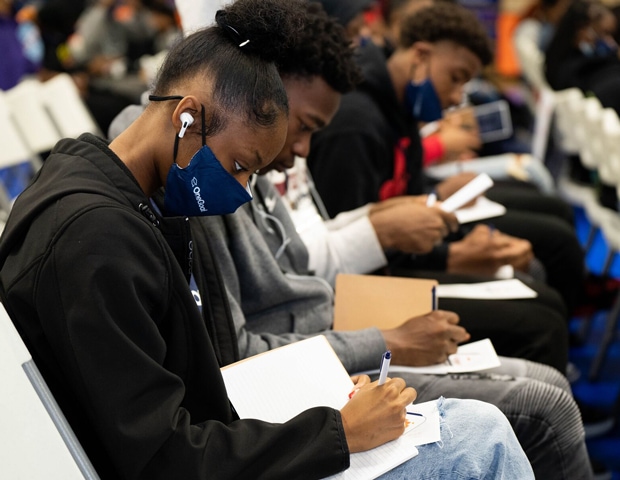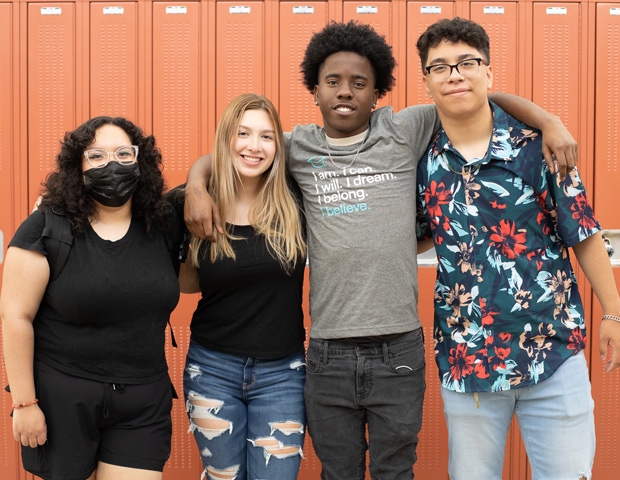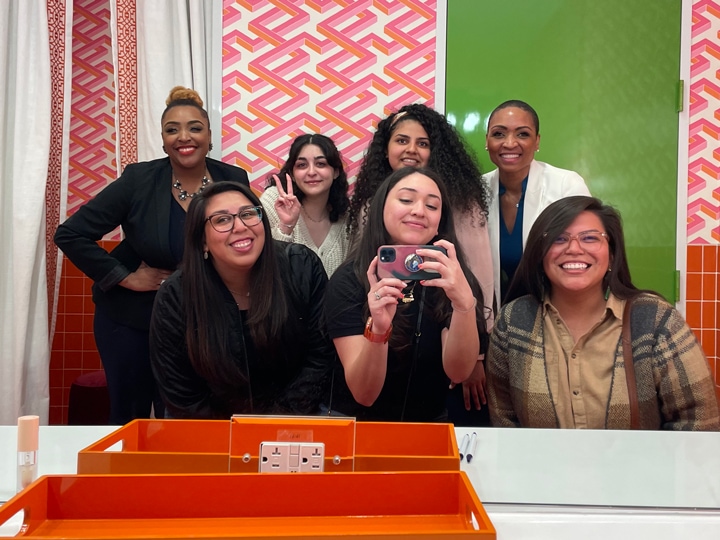“College and career readiness” is a frequently used metric in schools and in the postsecondary access field. But how is readiness defined?
Students from low-income backgrounds obtain college degrees at a much lower rate than students from high-income backgrounds. Schools can help close the degree divide by centering college and career readiness for all high school students.
What is the degree divide, and why should we care?
The Degree Divide is the disparity between college degrees obtained by students from low-income backgrounds and students from high-income backgrounds. Only 22% of students from low-income communities earn a postsecondary degree (bachelor’s or associate’s), compared to 67% of their peers from high-income areas. This disparity leads to an opportunity gap for students from low-income communities to achieve their goals.
The Federal Reserve’s Report on the Economic Well-Being of U.S. Households in 2018 – May 2019 says, “A college education is widely recognized as a path to higher income and greater economic well-being. Indeed, two-thirds of graduates from private not-for-profit and public institutions view the financial benefits of their education as larger than the costs.” According to the American Psychological Association, a college degree leads to an average annual wage increase of $30,000.
In addition to economic factors, a student’s race plays a role in whether or not they enroll or complete a postsecondary degree or credential. The Education Trust identified a 17 percentage point gap in educational attainment between Black (30.7%) and White adults (47.1%).
The benefits of completing college are undeniable, but many students of color and students from low-income communities do not attend or finish. This divide is particularly noticeable among students whose parents did not attend any postsecondary school. Only 17% of students in this category graduated from college. In stark contrast, 71% of students with at least one degree-holding parent graduated from college.
Students from all walks of life need a college degree or postsecondary credential in order to achieve their dreams, so why are certain students less likely to attend and complete college?
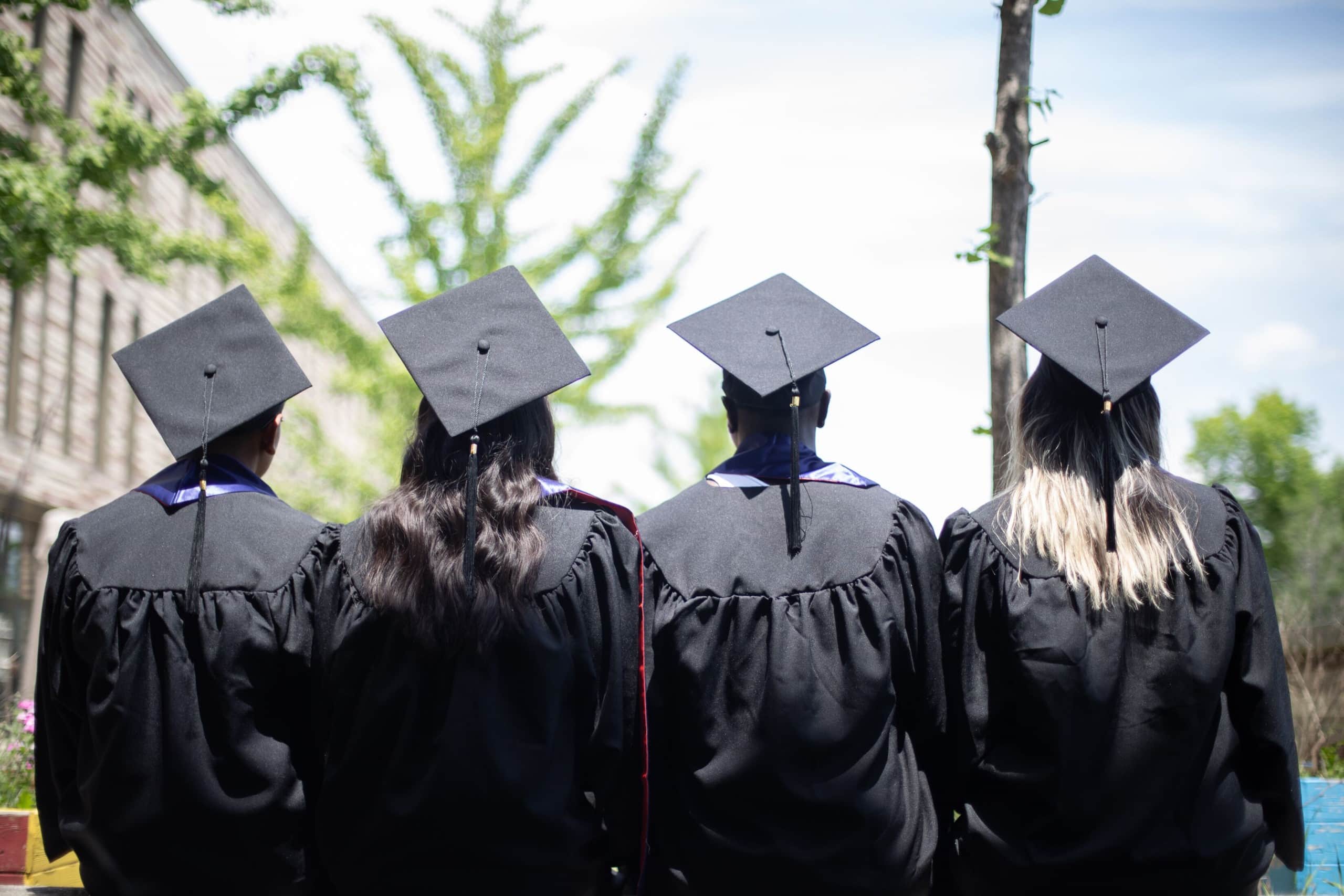
Barriers to College Success
Financial Barriers
There are many reasons why high school graduates do not begin or complete their postsecondary education. Financial concerns are the most common reason students do not attend college or trade school. Forty-seven percent of students who did not attend and 39% of students who stopped out decided not to pursue their postsecondary education due to the cost. For students who need to work to support themselves or their families, the loss of income due to class attendance can further impede the student’s ability to attend college.
There are many scholarships and funding available to students with financial limitations that can help ease the burden of paying for college. Students can apply for financial aid through the federal government with FAFSA and other scholarships and grants through their high schools, districts, and other companies.
It is vital that students are made aware of and encouraged to apply for as many scholarships as they can. Many students are surprised by the variety of scholarships available to them. Through the OneGoal program, students are connected with scholarships and opportunities they may otherwise miss. There are many scholarships available, but students can only receive them if they know how to apply for them, and first-generation college students may lack the generational knowledge and support needed to navigate their options.
The Process is Complicated
Another barrier to advancing education after high school, particularly for first-generation students, is the admissions process itself. Applying to schools and programs involves many steps that can confuse students and parents who have not experienced it. The American Psychological Association explains, “Applying to college can be one of the most challenging tasks a high school student undertakes. Lengthy application forms, letters of recommendation, writing samples, and the most convoluted task of all, attaining financial aid, is an arduous process even for those with assistance.”
Applying for college or other pathways is difficult for everyone. While trying to balance a heavy course load, seniors are expected to complete difficult forms, write essays, and submit important documents for every single institution on their list. Students with parents who have been to college or certificate programs can turn to their parents for some assistance. These parents are more likely to be able to help them proofread essays and applications and may even have connections with the college through alma mater programs. They will know “what the college is looking for” and can help their students present the best side of themselves for a specific institution. Parents who have earned degrees or certificates will also be more familiar with the various forms and documents that their students may require to apply to the institution of their choice.
A first-generation student pursuing college or another pathway will not have the advantage of an experienced adult in their life. They will need more assistance from their school counselors and teachers as they navigate this process. Schools can hold recurring FAFSA and college application nights to help students and parents complete the various applications. Counselors should check in when possible and make sure their first-generation students are on track throughout their senior year. OneGoal encourages their Program Directors to meet one-on-one with their students regularly through the OneGoal class to encourage them and help them navigate the complicated process.
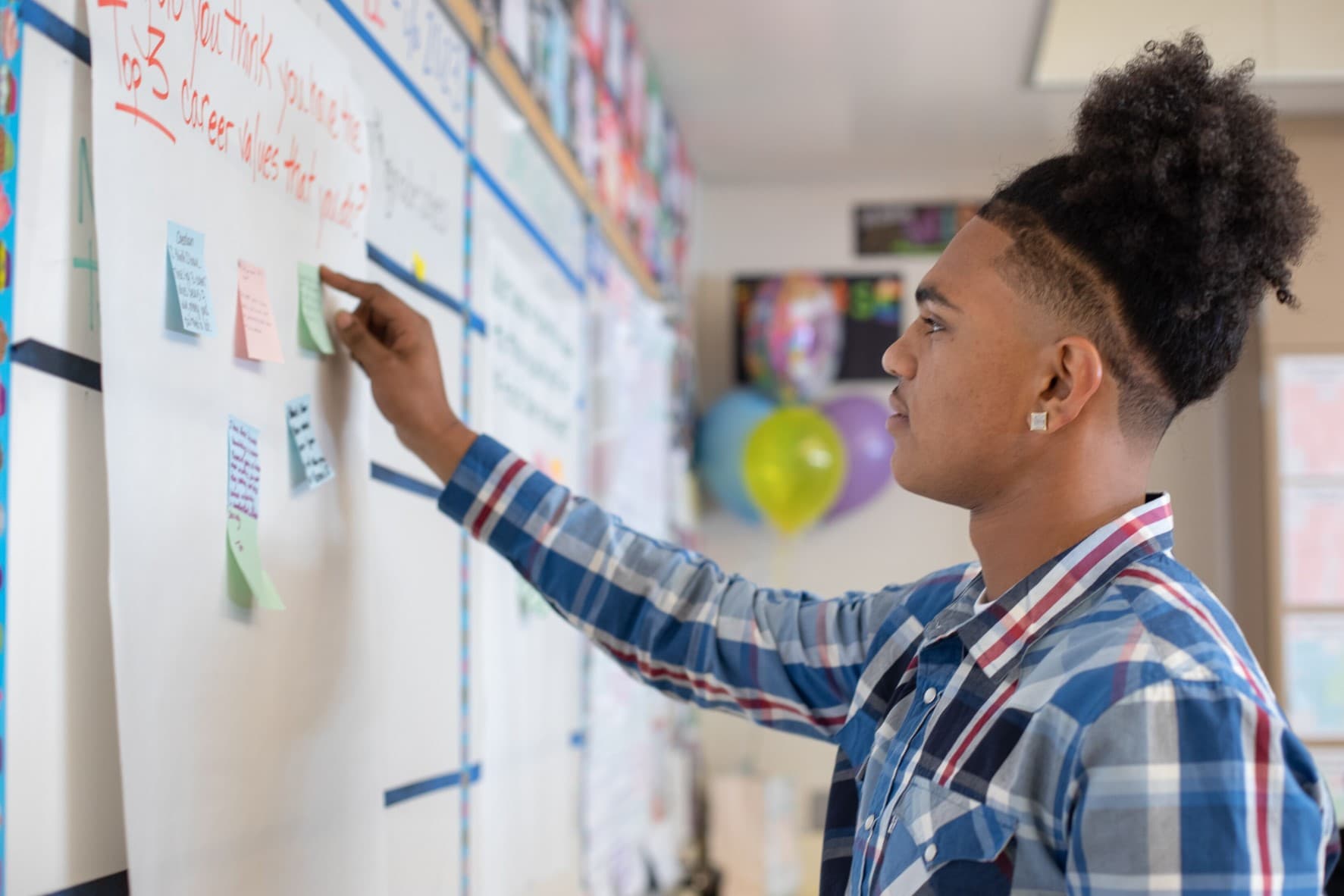
Because the process of applying to college is complicated for everyone, many colleges have chosen to simplify the process by utilizing common application forms like The Common App. Many states and college systems also have one application that allows students to apply to multiple schools at once. These applications save students time by keeping everything on one platform and eliminating the need to obtain multiple copies of recommendation letters, transcripts, and essays. Encouraging students to use common applications when possible save them time and frustration as they apply to college.
As students apply to colleges or technical schools, with or without a common application, they should keep careful track of their progress with each application. Every application is slightly different and may require different documentation. In order to stay organized, each senior should create a tracking tool using Google Sheets, Microsoft Excel, or another tracking system. This sheet should include a way to track the progress made with FAFSA or other state aid, scholarships, and applications for each college. Students are given a tracking form during their second year in the OneGoal program.
Preparing for and Taking the SAT and ACT Standardized Tests
The SAT and ACT are the banes of Juniors’ and Seniors’ existence around the country. Traditional two- and four-colleges and universities often require these tests, and a low score can limit the choices available to students. A student with a low score on the SAT or ACT may become discouraged and decide not to attend college. While a low test score is not limited to students from low-income communities, students from higher-income backgrounds generally achieve higher scores. While a low test score may not be the primary reason students from low-income backgrounds are not admitted to their college of choice, it is a notable concern as a lower score may convince a student not to apply to their dream school.
High schools can help students prepare for standardized tests by providing review sessions and dedicated time in class. Many schools have college and career readiness courses built into the schedules of students. Test prep should be incorporated into such courses to help all students prepare for the exam. OneGoal includes SAT and ACT practice in their curriculum during OneGoal Fellows’ first year in the program. Students are encouraged to study hard and retake the test for a higher score to qualify for college.
The Opportunity Gap
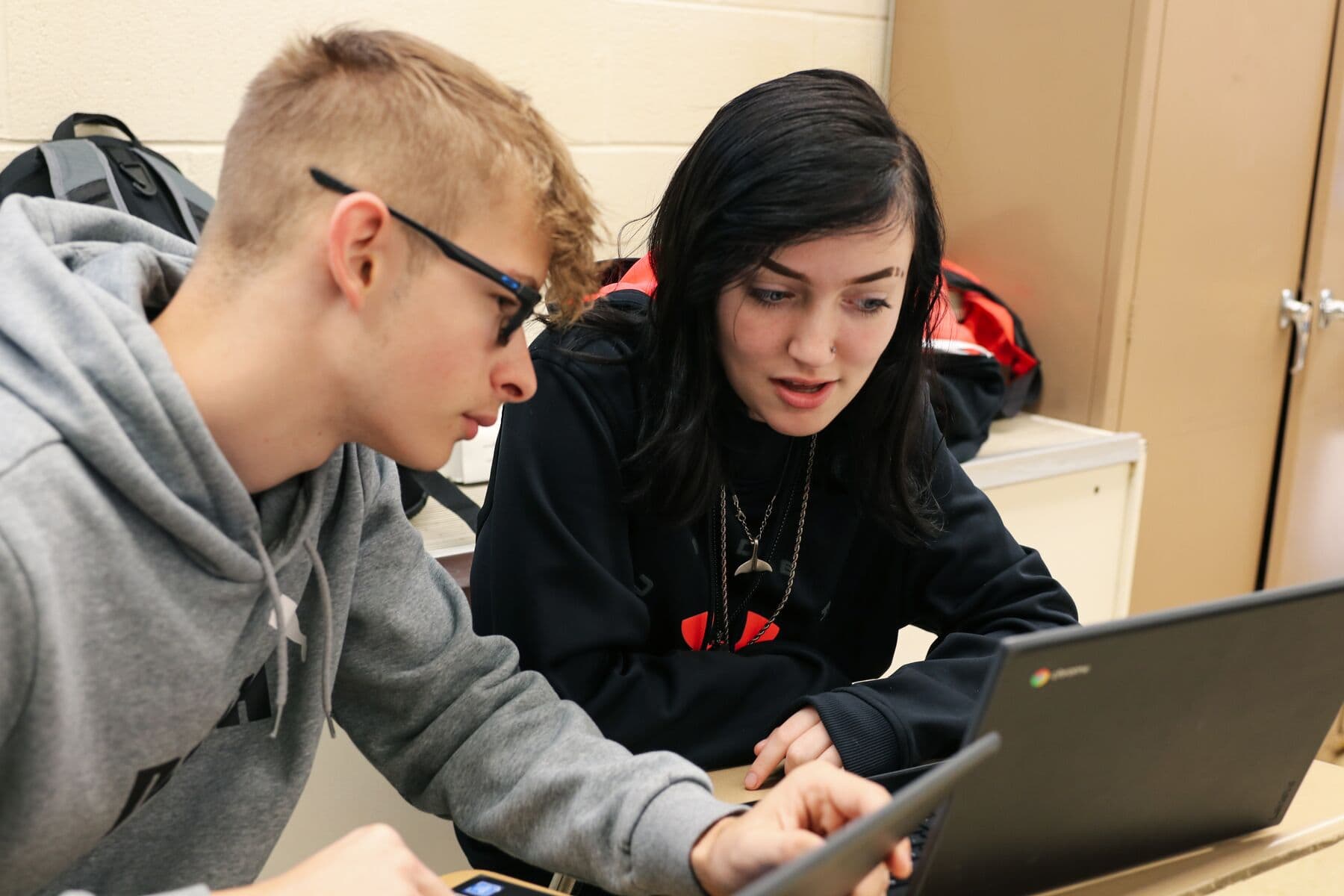
Financial concerns, difficult applications, and standardized testing can all contribute to the degree divide. Students from low-income communities, students of color, and first-generation students face these challenges at much higher rates than their high-income and white peers. This leads to students obtaining a degree or credential 60% less than their high-income peers. Without a degree or trade certificate, students have fewer opportunities and are less likely to achieve their dreams. Schools can help close the degree divide and support equity in education by implementing effective strategies that center college and career readiness into the high school experience for all students.
Shelby Ward was born and raised in Spokane, Washington. She received her BA in history teaching from Brigham Young University in Provo, Utah, where she had the opportunity to move to Houston for a three-month internship. Despite experiencing her first hurricane 10 days after moving in, Shelby never left and is now a OneGoal Program Director in Texas.

Related Stories
Establishing an equitable education environment is vital to helping students achieve their goals, but how can teachers and schools put this value into action?
OneGoal is piloting new partnerships to expand access to high-quality postsecondary opportunities for OneGoal Fellows and providing them with the timely and relevant support they need to complete their journeys in higher education.



